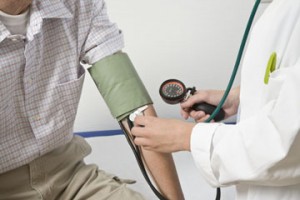This article is about the statement “forget the glass of red wine for good health”. For over 10 years there was the rule to limit alcohol intake. It said “1 glass of red wine for women and 2 glasses of red wine for men” daily. This was the recommendation in order to prevent a heart attack or a stroke. Now we are confronted with new research from Boston showing that even small amounts of alcohol are bad for you as alcohol is a carcinogen (=cancer producing substance). Misinformation like this occurs when science concentrates only on one angle of health. Researchers focussed on cardiovascular disease prevention. The other part of the equation, the carcinogenic effect of alcohol, was disregarded.
Australian study about the risk of cancer from alcohol consumption
In 1996 this Australian study followed 1236 men and 1569 women 60 years and over for more than 5 years and studied their mortality rates as a function of alcoholic drink intake. The authors found that there was a short-term protective effect with regard to cardiovascular/stroke mortality. Mortality was the end point for both cardiovascular disease and for cancer. Researchers took the study as evidence that alcoholic beverages protect to a certain degree from strokes and heart attacks. The authors were aware that alcohol was cancer causing as they stated, “Those taking any alcohol exhibited an increased proportion of deaths due to cancer at the expense of a reduced proportion of CHD and stroke deaths”.
Popular press is often misleading
But the popular press never mentioned this part in popular articles. Also, alcohol/cardio-protective recommendations did not mention the cancer danger. The authors also were aware that the observation time of 5 years was on the short side. We know from other studies that alcohol toxicity requires a longer observation time such as 15 to 20 years or longer to show significance in a multitude of cancers.
Alcohol consumption linked to cancer risk
As already mentioned above, the new survey of alcohol-caused cancer went through the popular press. Dr. Timothy S. Naimi from Boston University Medical Center was the main investigator of an international team of scientists. The study found that alcohol consumption is responsible every year for 18,200 to 21,300 cancer deaths in the US (that is 3.2% to 3.7% of all US cancer deaths). The authors of the study determined that every person who dies from alcohol related causes lost on average approximately 18 years of his/her life (scientists call this “years of potential life lost”). 51% of women developed breast cancer from alcohol exposure, 62% of men came down with upper airway and esophageal cancers. Less than 1.5 drinks per day caused between 26% and 35% of alcohol-related cancer deaths. No safe lower margin existed. The authors concluded, “Reducing alcohol consumption is an important and underemphasized cancer prevention strategy”.
Other research supporting the statement: “forget the glass of red wine for good health”
Interestingly, in 2006 other research looked at alcohol caused cancer cases in the world based on WHO data and concluded that with the increased worldwide consumption of alcohol, particularly in East Asia, preventative steps regulating consumption of alcoholic drinks would be wise.
A recent study in 2012 where cancer rates in the US were compared between Hispanics and Caucasians showed that Hispanics had higher rates of stomach cancer, liver cancer, uterine/cervix cancer and gallbladder cancer. The authors concluded that more screening is necessary in Hispanics such as Pap tests. Also this ethnic group requires effective vaccines (like Gardasil) against the human papilloma virus. In addition, patients need to reduce obesity, curtail alcohol consumption and reduce tobacco use.
There is no safe level of alcohol consumption, not even the “1 drink for women and 2 drinks for men” (heart attack prevention), because cancer incidence increases with increasing alcohol consumption in a linear relationship.
Effect of alcohol on the body
What does alcohol do in the body that it is so dangerous to your cells? Many cancer researchers have researched this question in detail. Essentially, alcohol is by itself a toxin for your cells (the targets being sub particles in your cells called microsomes and mitochondria). Your liver metabolizes alcohol into acetaldehyde, your kidneys excrete it and your lungs exhale it (this is how a breathalyzer can detect how much you have been drinking). All of these chemical changes in your cells release free radicals, which in turn attack other cells. This sets up a chronic inflammatory process, which breaks down your immune system, leads to cell mutations and finally to cancer.
Protection from cancer and cancer prevention
What protects you from cancer? It is the antioxidants that stabilize the above-mentioned processes: vitamin C, glutathione, vitamin D 3, curcumin, multiple vitamins, magnesium, flavonoid foods, cruciferous foods (like broccoli), exercise and soluble fiber.
So, if you were serious about cancer prevention, you may want to stop any alcohol intake. Instead take the above mentioned supplements. The heart attack and stroke protection will be achieved by flavonoid foods (perhaps specifically adding resveratrol 250 mg per day as well) and exercise.
If you were less conscientious about cancer prevention, at least reduce your alcohol consumption. Perhaps you want to drink the occasional glass of wine or beer. But avoid high percentage spirits and remember, the less the better! You may be toasting to ill health with that glass of wine. Say no to false advertising of the wine industry! Your body will thank you for it.
More information on alcoholism: http://nethealthbook.com/drug-addiction/alcoholism/















